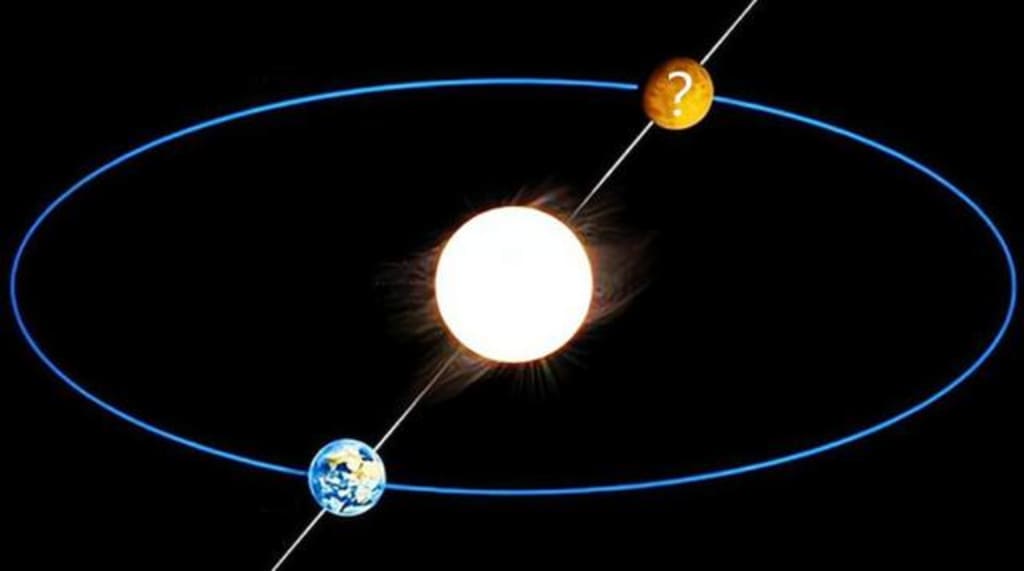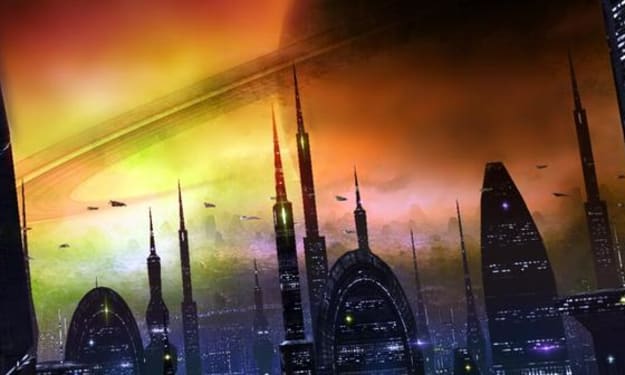There is a planet hidden behind the sun
If such a planet really existed

The Sun is the center of the solar system, and all known planets in the solar system, including the Earth, are revolving around the Sun under the effect of the Sun's gravity, and after knowing this fact, very interesting speculation was made: Is there a possibility that there is a planet hidden behind the Sun that we have not discovered?
The idea can be simply understood that, compared with the huge size of the Sun, the size of the planets can be said to be insignificant, under the Sun's cover, there is a large area behind which we cannot observe, so if there is a planet behind the Sun that orbits synchronously with the Earth, then this planet will always be located behind the Sun so that we can not find it.
It is conceivable that if such a planet existed and was rocky, it would probably be located in the habitable zone of the solar system, like the Earth, and thus have a natural environment that could support life, which would be very good news for us humans. Unfortunately, such a scenario is only possible in our imagination.
If a celestial body wants to keep synchronized with the Earth, it must be located in the equilibrium position between the Sun and the Earth's gravitational field, and in fact, such an equilibrium position does exist, and we call it the "Lagrangian point" (Lagrangian point), the number of which is 5, of which "Theoretically, as long as an object is located in this position, it can keep synchronized with the Earth.
However, it is important to know that the "Lagrangian points" are five special solutions to the restricted three-body problem, and the so-called restricted three-body problem refers to the fact that one of the three objects has such a small mass that it is negligible compared with the other two. If this condition is not met, then even if an object happens to be located at a Lagrangian point, it cannot be in equilibrium with the other two objects.
Thus, if an object is stable at "L3", its mass should be much lower than that of the Earth, and if this is the case, then it is a small object and cannot reach the level of a planet.
To put it in another way, even if we put a planet on "L3" and keep its rotation synchronized with the Earth, it will not be able to run stably for a long time, and it will soon leave this position under the combined effect of the Sun and the Earth's gravity. In the meantime, the Earth's orbit will change due to the gravitational influence of the planet, and if we are unlucky, the Earth may even collide with it.
In other words, it is theoretically impossible for an object with the mass of a planet to remain hidden behind the Sun. Even if there is a planet behind the Sun, it is unlikely that we will not find it.
We know that gravity is reciprocal, so when the planets revolve around the Sun, the Sun is not firmly in the center but wobbles to a certain extent due to the "drag" of the planet's gravity.
Among the eight planets, Jupiter, with more than twice the mass of the other planets combined, exerts the most significant gravitational influence on the Sun, so much so that the distance between the common center of mass of Jupiter and the Sun and the Sun's center is about 1.07 times the Sun's radius.
This means that when the Earth is perpendicular to the line between the Sun and Jupiter, we can observe on Earth that the Sun is "pulled" away by Jupiter's gravity by a distance equal to about 1.07 times the Sun's radius, in which case the "hidden region" behind the Sun is briefly exposed. In this case, the "hidden area" behind the Sun is briefly exposed to our view, and if there is indeed a planet hidden there, we will be able to discover it directly.
In addition, some of the many probes launched into space can help us visualize the area behind the Sun more easily.
For example, Ulysses, launched in 1990, has an orbit almost perpendicular to the ecliptic plane of the solar system, so the probe can directly observe areas in its orbit that we cannot observe on Earth.
Another example is the Solar Terrestrial Relations Observatory (STEREO), which was launched in 2006 and consists of two probing satellites located "in front" and "behind" the Earth's orbit. These two satellites are located "in front" and "behind" the Earth's orbit, and their field of view completely covers the area "behind the Sun" (relative to the Earth).
From the above, we can conclude with certainty that it is theoretically and practically impossible that there is a planet behind the Sun that we have not discovered.
About the Creator
Robert Jack
One of the secrets of emotional stability for adults is to keep the expectations of others to a minimum.
Enjoyed the story? Support the Creator.
Subscribe for free to receive all their stories in your feed. You could also pledge your support or give them a one-off tip, letting them know you appreciate their work.






Comments
There are no comments for this story
Be the first to respond and start the conversation.